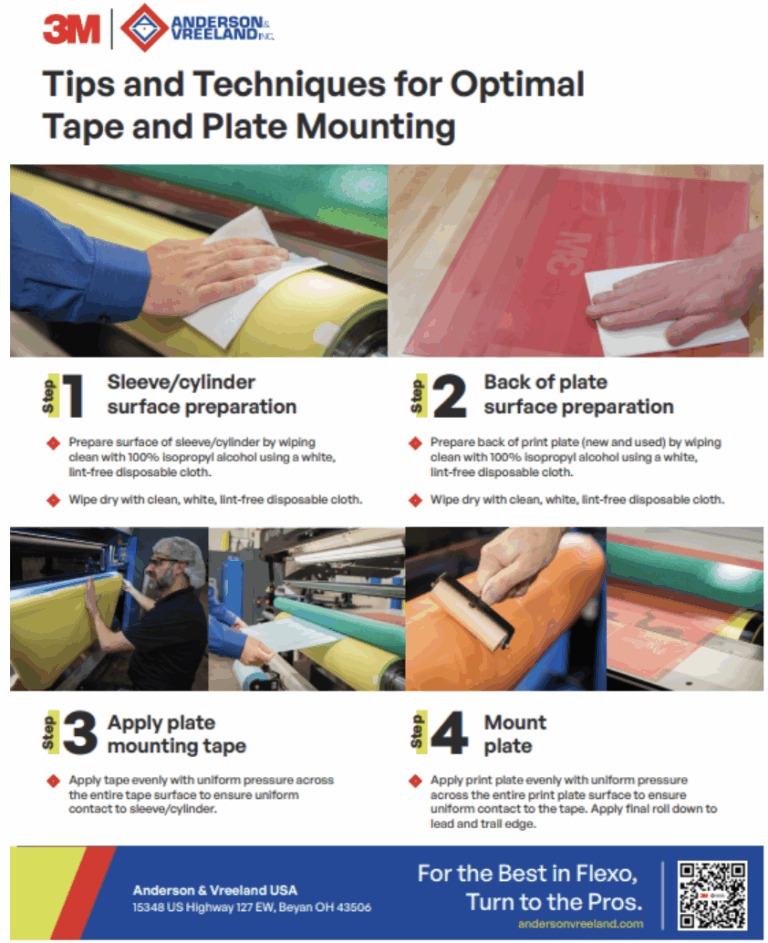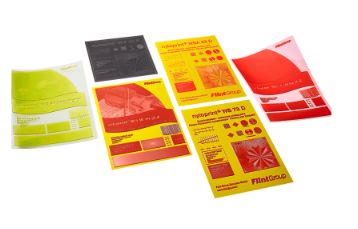At some point, many printers will consider bringing the flexographic platemaking process in-house. For certain volumes, producing your own flexographic printing plates can offer significant cost savings. Additionally, in-house platemaking allows for a quick response and immediate reproduction of plates if they get damaged or worn out.
Moreover, an in-house flexographic platemaking process can enhance project quality. When platemakers and printers work together under the same roof, they can better coordinate and address issues, such as adjusting the plate to resolve print production problems. This close collaboration naturally leads to improved communication and streamlined processes.
Thanks to advances in technology and polymer technology, manufacturing your own flexographic printing plates is more accessible than ever. This post introduces the main options available for flexographic platemaking and key considerations for choosing your system.
Types of Flexographic Printing Plates
We cover four types of flexographic printing plates:
- Water Wash
- Solvent
- Thermal
- Liquid
Conventional vs. Digital Platemaking
Conventional platemaking starts with a negative, similar to a photographic film process. The plate material is exposed to UV light through the negative, causing chemicals on the plate to bond and form the image base. The plate is then washed using water or solvent to remove the unexposed areas.
Digital platemaking eliminates the film, using a thin black mask on the plate material. An imaging device uses lasers to remove the mask according to the image, referred to as direct “computer-to-plate” (CTP) technology. The plate is then exposed to UV light and processed with a washout method.
The industry is shifting towards digital platemaking. When discussing water wash and solvent methods, we generally assume the adoption of a digital platemaking system.
Water Wash
Water-wash systems provide high-quality imaging with eco-friendly benefits. They are solvent-free, reduce VOC emissions, and reclaim water used in the washout process for reuse.
- Benefits:
- Quality: Holds fine detail, is dimensionally stable, and offers clean printing.
- Chemical-free: No toxic washout chemicals or solvents.
- Speed to production: Shorter drying time compared to solvents.
- Considerations:
- Plate size: Designed for plates up to 25×30 inches.
- Maintenance: Proper maintenance is crucial to avoid polymer residue and downtime.
Solvent
Solvent platemaking systems have been around the longest, offering low upkeep and high productivity.
- Benefits:
- Quality: Traditionally offered high plate quality, with advancements closing the gap.
- Maintenance: Lowest upkeep compared to other systems.
- Considerations:
- Cost: Large capital investment suitable for high-volume shops.
- Chemical exposure and waste: Recent developments in environmentally friendly solvents reduce environmental impact.
Thermal
Thermal platemaking is ideal for printers producing at least 3,000 square feet annually, or approximately 12 plates per week.
- Benefits:
- Ease of use: Simple process, reducing labor and training needs.
- Quick turn times
- Maintenance: Lower costs than water-wash and solvent.
- Quality: Matches solvent plates with excellent edge definition and print consistency.
- Considerations:
- Volume for ROI: Requires around 48 plates per month to be cost-effective.
Liquid
Liquid plate processing is ideal for corrugated printers needing high-quality, economical, and efficient solutions.
- Benefits:
- Size: Accommodates large, wide-web plates.
- Sustainability: Captures unexposed resin for minimal waste.
- Cost: Particularly cost-effective for thicker plates used in corrugated printing.
- Considerations:
Application specific: Generally not cost-effective for narrow web printers.
Your Supplier for Flexographic Printing Plates
Not ready to produce your own flexographic printing plates? Anderson & Vreeland can help evaluate your current plates and find the right flexo plate supplies for your print shop. Our flexographic printing plates come in various thicknesses and can be used with water- and solvent-based inks.
…And for Flexo Platemaking Equipment
For printers ready to bring platemaking in-house or upgrade their flexo plate equipment, Anderson & Vreeland offers specialized support and resources. We can help ensure your platemaking system provides optimum ROI, meeting your print job needs, floor space requirements, and sustainability goals.



